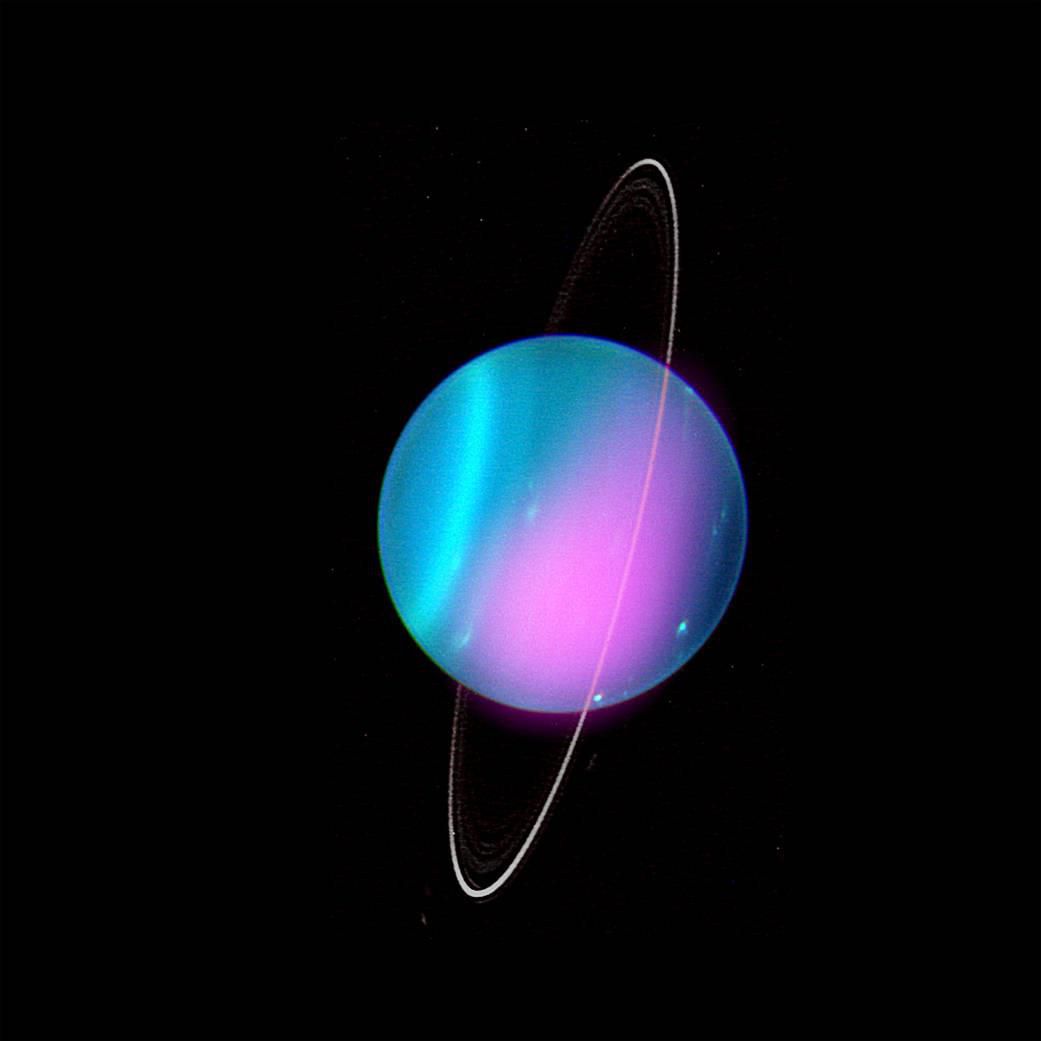
We Might Have The Secret Ingredient For Uranus’ Cold Climate
This joint X-ray and visual view from telescopes shows Uranus, a planet that only had one robotic ... [+] visitor in 1986.X-ray: NASA/CXO/University College London/W. Dunn et al; Optical: W.M. Keck ObservatoryIs one element to blame for the strangely cold atmosphere of Uranus? New research comparing Uranus with another distant gas giant planet, Neptune, suggests Uranus might have a lot more magnesium in its atmosphere. Scientists have been puzzled for decades about why Uranus is so much colder than Neptune, which is roughly the same size. Both planets are too far from the sun to receive heating from direct sunlight. New modeling, however, suggests that a "thermal blanket" of magnesium water in the atmosphere of Uranus is blocking the planet's heat from escaping into space and thats not so present on Neptune.The finding is a potentially exciting one, as it can also help us understand exoplanet climates even those far away from Earth, like the Uranus-sized Kepler-421b roughly 1,000 light-years away. While Uranus is too big to have life as we know it living among the clouds, getting a sense of all planet types in the universe points shows how worlds are made which helps us put our own planet into context.Artist's conception of Kepler-421b, a Uranus-sized exoplanet.Harvard-Smithsonian, Center for Astrophysics/D. A. AguilarThe new finding came after scientists simulated the high temperature and immense pressure of Uranus' and Neptunes insides in the lab. In these extreme environments, water-rock interactions are much different than what we're used to. Magnesium popped out from chemical reactions after the team tested typical rock-forming minerals (called olivine and ferropericlase), and compressed them to a high degree. The team also found magnesium may become easily dissolved in the water layers of the two planets, similar to salt in the Earth's oceans, noted study co-author Sang-Heon Dan Shim of Arizona State University in a statement.Weve discovered thousands of exoplanets using instruments like the retired NASA Kepler space telescope and the active High Accuracy Radial Velocity Planet Searcher (HARPS) instrument attached to a European Southern Observatory 3.6-meter telescope in Chile. Through methods such as examining star wobbles and dimming, our collection of planets so far shows that sub-Neptune worlds are the most common kind in the universe. So in other words, this magnesium phenomenon might be very common on other planets.Our understanding of distant worlds is still at an early stage, however. We only have probed a handful of planetary atmospheres directly, for example, but that could change very soon. NASAs long-awaited James Webb Space Telescope may launch as soon as this fall if the schedule holds. Webbs wide-ranging mission includes examining atmospheres of larger exoplanets to get a better census of whats out there.A study based on the magnesium research recently appeared in Nature, led by Taehyun Kim, of Yonsei University in South Korea.
……Space Science
Comments
Leave a comment in Nestia App